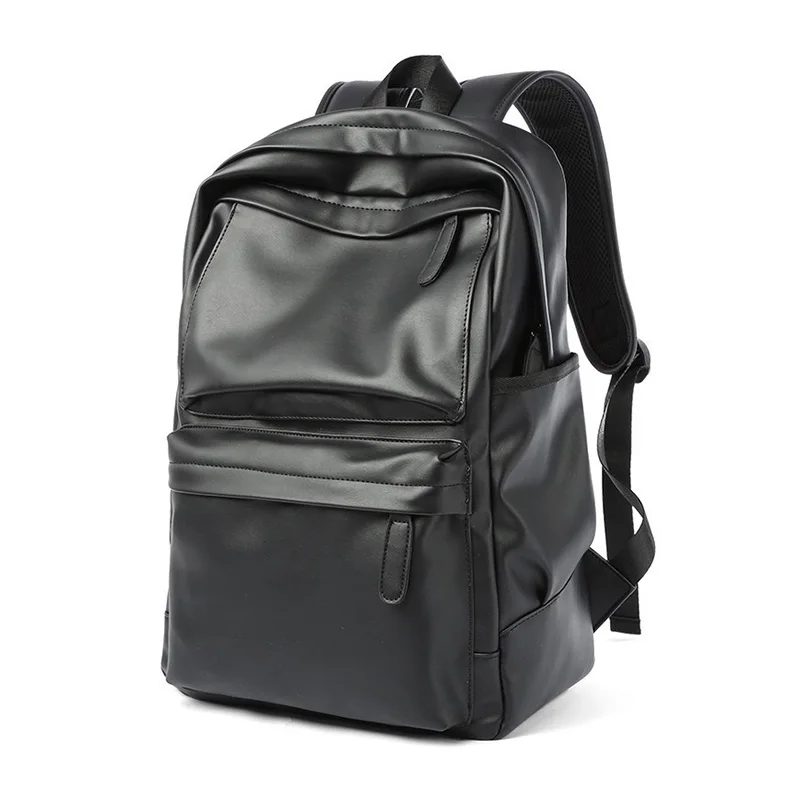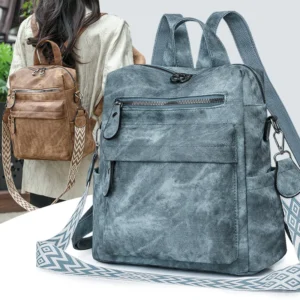Understanding Leather’s Vulnerability to Outdoor Elements
Leather is a natural material with remarkable durability and beauty, but it’s inherently vulnerable to environmental factors when used outdoors. While leather naturally has some water resistance due to its dense fiber structure, it’s not waterproof without proper treatment. Understanding this distinction is crucial—water-resistant leather can handle light moisture but will eventually absorb water, while properly waterproofed leather actively repels water for extended periods.
Without adequate protection, your leather bag faces numerous threats from outdoor elements:
- Rain and moisture: When untreated leather gets wet, it absorbs water, causing swelling, visible watermarks, and stiffness once dried. This repeated wet-dry cycle weakens the fibers over time.
- UV ray exposure: Sunlight causes leather to fade, dry out, and develop cracks. Just 2-3 weeks of regular sun exposure can visibly lighten dark leather and make it brittle.
- Dirt and abrasion: Particles work their way into leather pores, causing discoloration and accelerated wear, especially at stress points.
- Temperature fluctuations: Rapid changes between hot and cold make leather expand and contract, weakening its structure and causing premature aging.
- Humidity problems: High humidity environments promote mold growth, while extremely dry conditions leach natural oils, causing the leather to crack.
These vulnerabilities highlight why proper leather conditioning and waterproofing isn’t optional for bags that will face the elements—it’s essential for maintaining both functionality and appearance.
Essential Pre-Treatment Steps for Your Leather Bag
Before applying any protective treatments, proper preparation ensures maximum effectiveness and prevents potential damage:
Clean thoroughly: Remove all surface dirt and residues that might interfere with treatment absorption.
* For smooth leather: Use a soft, lint-free cloth slightly dampened with water or a specialized leather cleaner. Never soak the leather.
* For suede or nubuck: Use a dry suede brush to gently lift dirt from the napped surface. Avoid getting these leathers wet during cleaning.
* Wipe all hardware and crevices where dirt accumulates. Let the bag dry completely at room temperature before proceeding.Condition the leather: This critical step restores moisture and prevents cracking.
* Choose conditioners appropriate for your leather type—cream-based for finished leathers, specialized products for suede/nubuck.
* Apply a small amount with a soft cloth using gentle circular motions.
* Focus on giving your leather the nourishment it needs before adding protective layers. Proper conditioning for leather backpacks maintains the material’s natural flexibility.
* Allow the conditioner to fully absorb (typically 12-24 hours) before applying waterproofing treatments.Perform a patch test: This simple step prevents potential disasters.
* Apply a small amount of your chosen treatment to an inconspicuous area (inside flap or bottom corner).
* Wait 24 hours and check for unwanted color changes, darkening, or texture alterations.
* If you notice any negative reactions, try a different product better suited to your specific leather type.
Rushing these preparatory steps often leads to disappointing results or even damage to your beloved leather bag. Taking time with proper preparation ensures the protective treatments can perform at their best.
Types of Leather Treatments for Outdoor Protection
Choosing the right protective treatment depends on your leather type, expected outdoor conditions, and desired finish. This comparison will help you select the optimal solution:
| Treatment Type | Best For | Protection Level | Application Difficulty | Duration | Impact on Appearance |
|---|---|---|---|---|---|
| Waxes & Balms | Full-grain, oil-tanned | High | Moderate | 3-4 months | Darkening, matte to satin finish |
| Waterproofing Sprays | All types, ideal for suede | Medium | Easy | 1-2 months | Minimal change |
| Conditioning Oils | Raw, veg-tanned, oil-tanned | Medium-High | Easy | 2-3 months | Significant darkening, richer color |
| Protective Creams | Finished, dyed leathers | Medium | Easy | 1-2 months | Slight darkening |
| DIY Solutions | Most smooth leathers | Low-Medium | Varies | 2-4 weeks | Varies widely |
Waxes and Balms
These provide superior water protection by creating a physical barrier on the leather surface. Products like Sno-Seal (beeswax-based), Fjällräven Greenland Wax, and Otter Wax Heavy Duty Bar offer excellent water resistance but require more effort to apply properly. They’re ideal for bags that will face harsh conditions but may darken leather significantly.
Waterproofing Sprays
Perfect for easy application and minimal appearance change, sprays like Scotchgard Leather Protector, Nikwax Waterproofing Wax, and Kiwi Rain & Stain Protector create an invisible barrier. They’re especially suitable for suede, nubuck, and leathers where maintaining original appearance is crucial. However, they require more frequent reapplication.
Conditioning Oils
Mink oil, neatsfoot oil, and specialized blends penetrate deeply to both condition and add water resistance. They significantly darken most leathers while enhancing water protection from within the fibers. Montana Pitch-Blend, Obenauf’s Oil, and Red Wing Boot Oil are popular options that provide both nourishment and protection.
Protective Creams
These balanced formulas like Chamberlain’s Leather Milk, Blackrock Leather ‘n’ Rich, and Leather Honey offer conditioning with moderate water protection. They’re excellent for regular maintenance of bags that face occasional light exposure to elements.
When selecting your treatment, consider the complete waterproofing process for leather bags and factor in your specific needs. For premium items like full-grain leather backpacks, finding the right balance between protection and preserving leather’s natural beauty is essential.
How to Choose the Right Treatment for Your Leather Bag
Selecting the perfect treatment requires understanding your specific leather type and usage conditions:
Identifying Your Leather Type
The first step is knowing exactly what type of leather your bag is made from, as this determines compatible treatments:
- Full-grain leather: The highest quality with visible natural grain patterns; responds well to waxes, oils, and creams. Generally can handle heavier treatments.
- Top-grain leather: Sanded and refinished surface; works best with creams and sprays that won’t disturb the finish.
- Suede and nubuck: Napped surface requires specialized sprays; avoid oils and waxes that would mat down the texture.
- Vegetable-tanned: Natural, often undyed leather that darkens readily with oils and waxes.
- Chrome-tanned: Generally more water-resistant already; benefits from specialized treatments for finished leathers.
Assessing Your Exposure Level
Be realistic about the conditions your bag will face:
- Occasional light rain: Lightweight sprays or cream treatments provide sufficient protection.
- Regular outdoor use: Heavier wax treatments or multiple layers of protection are warranted.
- Mainly sun exposure: Focus on UV-protective treatments rather than heavy waterproofing.
- Mixed conditions: Consider seasonal treatments with different products throughout the year.
Aesthetic Considerations
Different treatments create different looks:
- Waxes and oils typically darken leather by 1-3 shades and may add a patina effect
- Sprays usually maintain original appearance but may slightly alter texture
- Creams often enhance existing color while adding minimal darkening
- Natural treatments like beeswax add a warm tone to most leathers
Treatment Composition
The ingredients matter for both effectiveness and leather health:
- Natural ingredients (beeswax, plant oils, lanolin) are often gentler but may offer less extreme protection
- Silicone-based products provide excellent water repellency but may prevent leather from breathing
- Fluoropolymer formulas balance protection with breathability
- Avoid treatments containing alcohol for regular use as they can dry out leather over time
The leather maintenance guide provides additional insights into selecting treatments that align with your long-term care strategy, ensuring your leather bag remains protected without compromising its character.
Step-by-Step Application Guide for Waxes and Balms
Waxes and balms provide excellent protection for leather bags facing serious outdoor exposure. Follow these steps for optimal results:
Prepare your environment
* Work in a clean, dust-free area at room temperature (65-75°F/18-24°C)
* Lay out newspaper or drop cloth to protect surfaces
* Gather supplies: wax/balm, applicator cloth (lint-free), buffing cloth, hairdryer (optional)Warm the product if necessary
* Some waxes perform better when slightly warmed
* For harder waxes, warm the container in your hands for 2-3 minutes
* Alternatively, use a hairdryer on low heat to soften the productApply with proper technique
* Scoop a small amount (pea-sized) with your fingers or cloth
* Work in very small sections, about 3-4 inches square
* Use small, overlapping circular motions with gentle pressure
* Less is more—thin layers absorb better than thick applicationFocus on high-exposure areas
* Pay special attention to seams, edges, and bottom of bag
* Apply slightly more product to areas that contact surfaces regularly
* Ensure even coverage across all leather portionsAllow initial absorption
* Let the wax sit for 15-20 minutes to begin penetrating the leather
* The surface should appear slightly damp but not wet or stickyHeat-set for deeper penetration (optional but recommended)
* Use a hairdryer on low heat, holding 8-10 inches from the surface
* Move constantly to avoid overheating any area
* Heat until wax visibly melts into the leatherBuff to desired finish
* After cooling (approximately 30 minutes), buff vigorously with a clean cloth
* Use circular motions, applying firm pressure
* Continue until no waxy residue remains and desired shine is achievedTest water resistance
* After 24 hours, place a few drops of water on an inconspicuous area
* Water should bead up rather than absorb
* If water absorbs, apply a second thin coat following the same process
• Pro tip: For maximum protection, apply 2-3 very thin coats rather than one heavy coat. Allow 24 hours between applications.
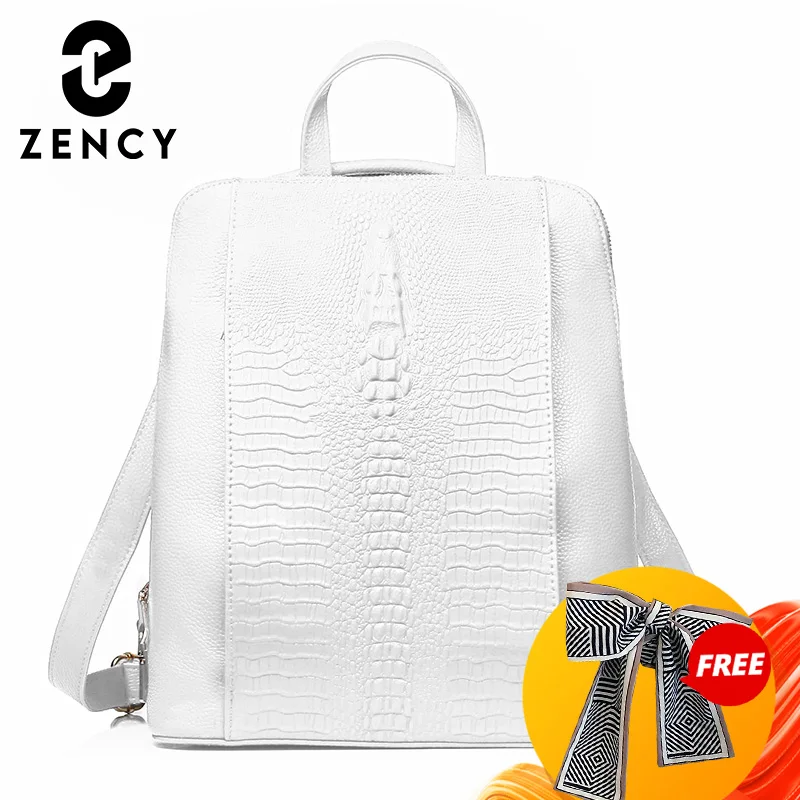
Step-by-Step Application Guide for Waterproofing Sprays
Waterproofing sprays offer convenience and minimal appearance change, making them perfect for suede, nubuck, and finished leathers:
Prepare properly
* Work outdoors or in a well-ventilated area to avoid inhaling fumes
* Cover any hardware with masking tape to prevent residue buildup
* Shake the spray container vigorously for at least 30 secondsTest spray pattern
* Make a test spray away from your bag to ensure nozzle is working correctly
* Look for a fine, even mist rather than streams or dripsApply with correct distance
* Hold can 8-12 inches (20-30 cm) from leather surface
* Maintain consistent distance throughout application
* Too close: risk of saturation and uneven coverage
* Too far: insufficient product reaches the leatherUse proper spray technique
* Apply in light, even, overlapping passes
* Start with horizontal strokes, then follow with vertical strokes for complete coverage
* Keep the can moving continuously to prevent pooling
* Apply slightly more to edges and seams where water penetrates easilyApply multiple coats
* Allow 10-15 minutes between coats
* Most bags benefit from 2-3 light coats rather than one heavy application
* Each coat should be barely visible when applied correctlyAllow full curing
* Let dry completely for at least 24 hours before exposure to moisture
* Avoid handling the bag during this curing period
* For maximum protection, some manufacturers recommend 48-72 hours of curing time
CAUTION: Never apply sprays near open flames, sparks, or high heat. Many waterproofing sprays are flammable. Keep away from children and pets during application and curing.
Understanding whether oiling leather waterproofs it provides additional context for why specialized sprays are often preferred over oils for certain leather types and situations.
Step-by-Step Application Guide for Oils and Creams
Oils and creams provide excellent conditioning along with moderate water protection. Their application differs slightly from waxes and sprays:
Select the right product
* Oils (like mink oil or neatsfoot oil) provide deep penetration but significant darkening
* Creams offer more balanced conditioning with moderate waterproofing and less color change
* Match product to leather type: oils for sturdy full-grain, creams for finished leathersPrepare for application
* Ensure leather is clean, dry, and at room temperature
* Choose appropriate applicator:- Soft cloth for creams and thicker oils
- Clean fingertips for thinner oils (allows better feel for absorption)
- Foam applicator for even distribution of creams
Apply with proper technique
* For oils:- Use quarter-sized amount for each section of bag
- Warm oil between fingers before applying
- Use gentle, circular motion to work into leather
- For creams:
- Apply thin, even layer using small circular motions
- Work in small sections (4-6 inches square)
- Focus on consistent coverage rather than quantity
Monitor absorption
* Allow initial absorption (10-15 minutes)
* If dry spots appear, apply slightly more product to those areas
* If excess product pools on surface, gently wipe away with clean clothComplete absorption period
* Let oils absorb for 6-12 hours before handling extensively
* Cream products typically require 4-6 hours for full absorption
* Place in warm, dry location during absorption periodFinal finishing
* After absorption period, buff gently with soft cloth to remove any excess
* For oils: if surface feels tacky, buff more vigorously to remove residue
* For creams: check for even appearance and touch up any uneven spots
For travelers who prioritize durability, properly treated leather travel backpacks maintain both functionality and appearance throughout various climate conditions and adventures.
Emergency Protection: What to Do When Caught in the Rain
Even with preparation, you may occasionally face unexpected downpours with your leather bag. Here’s how to minimize damage:
Immediate Response
Blot, don’t wipe
* Use an absorbent cloth (microfiber works best) or clean paper towels
* Press gently against wet areas to absorb moisture
* Never rub, as this pushes water deeper into leather
* Rotate to dry sections of your cloth as moisture is absorbedProtect the contents
* Remove items from bag if possible, especially electronics and papers
* Check interior lining for moisture penetration
* Place moisture-absorbing packets inside if availableShield from further exposure
* Position bag under your jacket or in a plastic bag if available
* Keep away from direct heat sources (car heaters, radiators)
Post-Exposure Treatment
Proper drying technique
* Stuff bag with white, acid-free tissue or clean white cloths to maintain shape
* Place in well-ventilated area at room temperature
* Allow 24-48 hours for complete drying
* NEVER use hair dryers, heaters, or sunshine to speed dryingCommon mistakes to avoid
* Using newspaper (ink can transfer to damp leather)
* Placing near heat sources (causes warping and cracking)
* Sealing in wet bag (promotes mold growth)
Restoration Procedures
Address water spots
* Once completely dry, apply leather conditioner to entire surface
* For persistent spots, dampen entire panel evenly, then condition after drying
* Use specialized leather spot treatments for stubborn marksRecondition
* Apply leather conditioner to restore oils lost during water exposure
* Let conditioner absorb fully (12-24 hours)
* Re-waterproof with your chosen treatment method
For adventurers who frequently travel with men’s leather travel backpacks, keeping a small emergency care kit with absorbent cloths and travel-sized conditioner can save your bag from significant water damage.
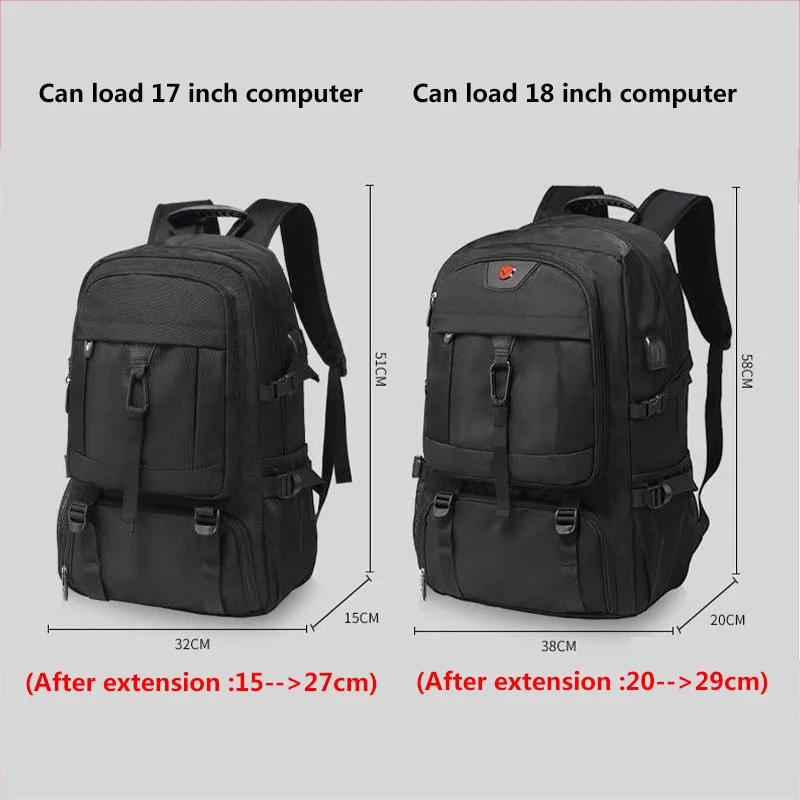
Protecting Your Leather Bag from Sun and Heat Damage
While moisture often gets the most attention, sun exposure can cause equally serious damage to leather goods. UV rays break down leather fibers and fade colors, while heat dries out natural oils.
Understanding UV Damage
UV radiation attacks leather at the molecular level, degrading the protein structure and causing the material to become brittle. Darker leathers show fading more dramatically, sometimes lightening noticeably after just 20-30 hours of direct sunlight exposure.
Preventative Strategies
- Storage habits: Store bags away from windows and direct sunlight when not in use
- Protective treatments: Apply UV-protective leather conditioners containing sunscreen compounds
- Rotation technique: Change the position of your bag regularly when outdoors to prevent uneven exposure
- Cover when needed: Use a lightweight cloth cover during extended outdoor periods
Treatment for Sun-Damaged Leather
- Identifying damage signs: Look for uneven coloration, stiff texture, or powdery surface
- Deep conditioning: Sun-damaged leather needs intensive conditioning with oil-rich products
- Color restoration: For faded areas, specialized leather color restorers can help even the appearance
- Ongoing protection: After restoration, apply UV-protective treatments every 1-2 months
Prevention is far easier than restoration, so incorporating UV protection into your regular DIY leather care routine for travel backpacks helps maintain your bag’s appearance and structural integrity even during outdoor adventures.
Combating Mold and Mildew in Humid Conditions
Humidity presents a serious threat to leather goods, creating perfect conditions for mold and mildew growth. These fungi not only create unsightly spots but can permanently damage leather if left untreated.
Prevention Strategies
- Smart storage: Use silica gel packets inside bags when storing in humid environments
- Circulation matters: Never store leather in plastic bags; use breathable cotton dust bags
- Humidity control: Keep humidity below 60% using dehumidifiers in storage areas
- Preventative treatments: Apply anti-fungal leather sprays before traveling to humid climates
Identifying Early Signs
- Visual indicators: White, green, or black powdery or fuzzy spots
- Scent markers: Musty or earthy smell even when bag appears clean
- High-risk areas: Check inside pockets, bottom corners, and seams first
Treatment Protocols
- Mild cases: Move to dry environment, brush off visible mold with soft brush, wipe with cloth dampened with equal parts water and rubbing alcohol
- Natural solutions: A solution of equal parts white vinegar and water effectively kills mold (test on inconspicuous area first)
- Severe cases: Professional cleaning may be necessary if mold has penetrated deeply
- Post-treatment: After cleaning, dry thoroughly and apply leather conditioner with anti-fungal properties
Using eco-conscious leather treatment methods helps protect both your bag and the environment when addressing humidity-related issues.
Creating a Seasonal Leather Bag Maintenance Schedule
A structured maintenance approach ensures your leather bag stays protected year-round. Adjust this schedule based on your local climate and usage patterns:
Spring Maintenance (March-May)
- Deep cleaning to remove winter salt and grime
- Assessment for winter damage repair
- Lighter conditioning treatment
- Medium waterproofing application
- UV protection application before increased sun exposure
Summer Care (June-August)
- Frequent light cleaning to remove dust and sweat
- UV protectant reapplication every 3-4 weeks
- Light conditioning to prevent drying
- Mold check if stored in air-conditioned environments (condensation risk)
Fall Preparation (September-November)
- Thorough cleaning of summer dust and oils
- Deep conditioning treatment
- Heavy-duty waterproofing application
- Seam reinforcement check before winter stress
Winter Protection (December-February)
- Salt-removal wiping after exposure
- Increased conditioning frequency to combat heating-related drying
- Waterproofing touch-ups for snow and slush protection
- Storage with shape supports when not in use
Signs Indicating Immediate Retreatment
- Water no longer beads on surface
- Leather feels dry or stiff to the touch
- Color appears lighter or uneven
- Leather surface feels rough where it was once smooth
- Visible water absorption during light rain
For collectors of vintage leather backpacks, seasonal care is especially important as older leather often has less natural oils remaining and requires more attentive maintenance.
14 Inch Leather Laptop Backpack, Brown Leather Backpack, Men's Leather Backpack, Vintage Leather Backpack
Price range: $177.28 through $199.12 Select options This product has multiple variants. The options may be chosen on the product pageCarry On Leather Backpack, Roll Top Leather Backpack
Price range: $77.76 through $96.48 Select options This product has multiple variants. The options may be chosen on the product pageDesigner Mini Backpack, Mini Leather Backpack, Small Leather Sling Backpack, Women's Leather Backpack
Price range: $95.76 through $98.80 Select options This product has multiple variants. The options may be chosen on the product pageDesigner Mini Backpack, Designer Women's Backpack, Mini Leather Backpack, Women's Leather Backpack
Price range: $135.92 through $137.64 Select options This product has multiple variants. The options may be chosen on the product page17 Inch Leather Laptop Backpack, Men's Leather Travel Backpack, Men's Leather Work Backpack
Price range: $106.28 through $143.88 Select options This product has multiple variants. The options may be chosen on the product pageBlack Leather Backpack, Small Leather Backpack, Women's Leather Backpack
Price range: $112.96 through $116.12 Select options This product has multiple variants. The options may be chosen on the product page
Professional vs. DIY Treatment: When to Seek Expert Help
While many leather treatments can be effectively applied at home, certain situations call for professional expertise:
When DIY Treatments Are Sufficient
- Routine maintenance and cleaning
- Basic waterproofing for occasional outdoor use
- Minor water spot treatment
- Regular conditioning
- Preventative protection
When Professional Treatment Is Recommended
- Valuable or heirloom-quality leather items (over $500)
- Antique leather with fragile or deteriorating surfaces
- Severe water or flood damage
- Deep mold infiltration
- Specialty leathers (exotic skins, rare tanning methods)
- Color restoration needs
- Structural damage repair alongside waterproofing
Finding Qualified Leather Care Professionals
- Look for specialists with experience in your specific leather type
- Ask about their restoration process and materials used
- Request before/after examples of similar items
- Confirm they use acid-free and archival-quality products
- Verify they offer both cleaning and protective treatments
Typically, professional leather treatment costs $75-$200 depending on bag size and condition, while quality DIY materials for home treatment range from $30-$60 for a complete kit. For particularly valuable items, the professional investment often pays off through extended leather lifespan.
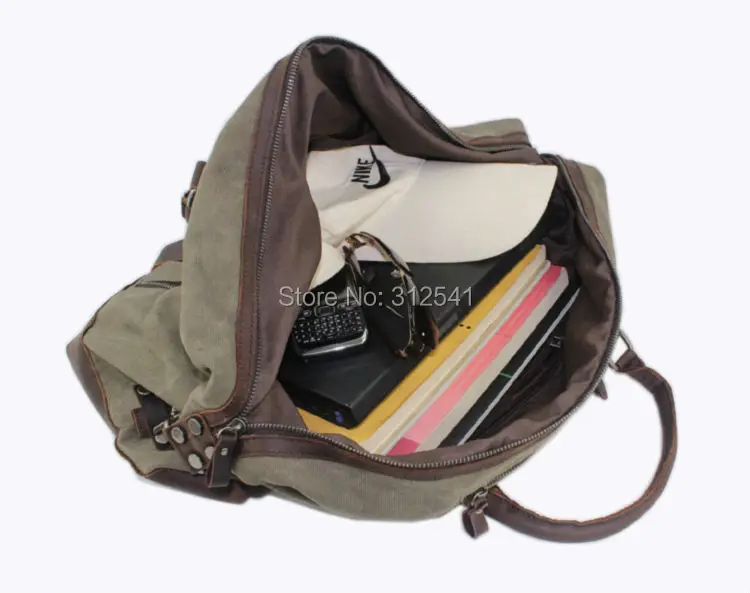
Treating Specialty Leather Types for Outdoor Use
Different leather types require specialized approaches to waterproofing and protection:
Suede and Nubuck Treatment
Suede and nubuck present unique challenges due to their napped surface:
* Appropriate products: Use only spray protectors specifically formulated for suede/nubuck
* Application technique: Apply from 8-10 inches away in very light, even coats
* Brush restoration: Use a specialized suede brush before and after treatment
* Recommended products: Scotchgard Suede & Nubuck Protector, Saphir Médaille d’Or Invulner Spray
* Protection expectations: Even properly treated suede will never match smooth leather’s water resistance
Vegetable vs. Chrome-Tanned Considerations
These different tanning methods create leathers with distinct properties:
Vegetable-tanned leather:
* More absorbent of treatments, requiring less product
* Develops beautiful patina with oil and wax treatments
* Benefits from natural products like beeswax and plant-based oils
* Requires more frequent conditioning in dry climates
Chrome-tanned leather:
* Often has built-in water resistance
* Less absorbent, so treatments stay more on surface
* Works well with synthetic waterproofing sprays
* Maintains color consistency better with treatment
For owners of women’s leather backpacks with decorative elements or mixed leather types, targeted application is essential—apply different treatments to different leather sections as appropriate.
Troubleshooting: Common Problems and Solutions
Even with careful application, issues can arise. Here are solutions to common leather treatment problems:
Addressing Water Damage
Problem: Water spots and stains
* Solution: For fresh spots, dampen the entire panel evenly, then condition after drying. For set stains, apply leather cleaner, then conditioner, working from outside the spot inward.
Problem: Water-caused stiffness
* Solution: Apply leather conditioner in thin layers, working it in with circular motions. Repeat 2-3 times over several days until flexibility returns.
Problem: Mold development after soaking
* Solution: Move to dry area, brush off visible mold with soft brush, wipe with cloth dampened with equal parts water and white vinegar, dry completely, then apply anti-fungal leather conditioner.
Fixing Treatment Application Issues
Problem: Uneven application appearance
* Solution: For wax/oil treatments, apply heat with hairdryer on low setting to help distribute product evenly. For sprays, lightly dampen surface and reapply evenly.
Problem: Over-application of product
* Solution: Wipe excess with clean cloth. If still tacky after 48 hours, use leather cleaner to remove buildup, then start with thinner application.
Problem: Sticky residue
* Solution: Buff vigorously with clean cotton cloth. If persistence, lightly clean with leather soap and water, then recondition.
Reversing Color Changes
Problem: Excessive darkening
* Solution: Clean with leather soap specifically designed to remove oils. Apply in sections, working quickly. May require 2-3 treatments.
Problem: Uneven coloration
* Solution: For mild cases, even application of conditioner can help blend differences. For significant variance, full panel retreatment may be necessary.
Understanding the different leather types for durable bags helps prevent many of these issues by matching appropriate treatments to specific leather characteristics.
The Environmental Impact of Leather Treatments
As environmental awareness increases, many leather enthusiasts seek treatments that protect both their bags and the planet:
Eco-Friendly Treatment Options
Several effective alternatives minimize environmental impact:
* Natural waxes: Beeswax, carnauba wax, and lanolin provide excellent protection with minimal processing
* Plant-based options: Treatments using coconut oil, olive oil, and jojoba oil offer moderate protection
* Water-based formulations: Modern water-based protectors reduce VOC emissions while maintaining effectiveness
Understanding VOCs and Environmental Concerns
Many traditional leather treatments contain volatile organic compounds (VOCs) that contribute to air pollution:
* Look for products labeled “Low-VOC” or “VOC-free”
* Apply treatments outdoors or in well-ventilated areas
* Properly dispose of containers according to local regulations
* Consider concentrated products that require less packaging
Balancing Protection Needs with Environmental Consciousness
Finding the right balance requires considering:
* Longevity benefits—durable products that last longer reduce overall consumption
* Application frequency—some eco-friendly options require more frequent application
* Product sourcing—look for companies with transparent supply chains
* Packaging considerations—minimal, recyclable, or biodegradable packaging reduces impact
By making informed choices about leather treatments, you protect your investment while minimizing environmental impact. Many natural methods have been used effectively for centuries before modern chemical treatments were developed.
Is Waterproofing Your Leather Bag Always Necessary?
While protection is important, some leather enthusiasts deliberately choose minimal treatment. Consider these perspectives:
The Beauty of Natural Patina
Some leather aficionados specifically avoid heavy waterproofing to allow natural aging:
* Untreated leather develops unique character based on use patterns
* Natural darkening and subtle marks tell the story of your adventures
* Some high-end leather actually becomes more beautiful with age and gentle wear
Light Protection Alternatives
For those preferring minimal intervention:
* Simple conditioning without waterproofing maintains leather health while allowing patina
* Temporary protection methods (like beeswax rubbed on before exposure, wiped off after)
* Selective treatment of only high-risk areas (bottom, handles, stress points)
Evaluating Your Specific Needs
Consider your realistic usage scenario:
* Brief exposure to light rain rarely damages well-conditioned leather
* Office-to-car use requires minimal waterproofing
* Mixed urban/outdoor use benefits from moderate protection
* Wilderness adventures demand comprehensive waterproofing
The choice ultimately depends on your personal preferences and how you balance protection versus natural aging. Many Summit Carry customers appreciate the character that develops in premium leather over time, choosing light protection that preserves leather health while allowing personalized patina development.
Essential Supplies for Your Leather Care Kit
Building a complete leather care arsenal ensures you’re prepared for both regular maintenance and unexpected situations:
Core Leather Care Elements
- Cleaning tools:
- Soft horsehair brush for dust removal
- Leather-specific cleaner
- Microfiber cloths (at least 3-4)
Soft toothbrush for seams and details
Treatment products:
- All-purpose leather conditioner
- Waterproofing product appropriate for your leather type
- UV protectant (if separate from waterproofing)
Leather-safe spot cleaner for emergencies
Application tools:
- Lint-free applicator cloths
- Foam applicators for cream products
- Soft buffing cloths
- Gloves to keep hands clean during application
Storage Requirements
- Keep products in cool, dry place away from direct sunlight
- Check shelf life—most leather products remain effective for 1-3 years
- Tightly seal containers between uses to prevent drying
- Label products with purchase date to track freshness
Cost-Effective Approaches
- Multi-purpose products (cleaner-conditioner combinations) save money and space
- Quality brushes and applicators last for years when properly maintained
- Small travel kit with essentials prevents expensive emergency purchases
- Invest in higher-quality base products (cleaner, conditioner) while economizing on applicators
A complete quality leather care kit typically costs $75-150 but can extend the life of a premium leather bag by many years. Consider it an essential investment that protects your Summit Carry bag through countless adventures while maintaining its distinctive character and functionality.

